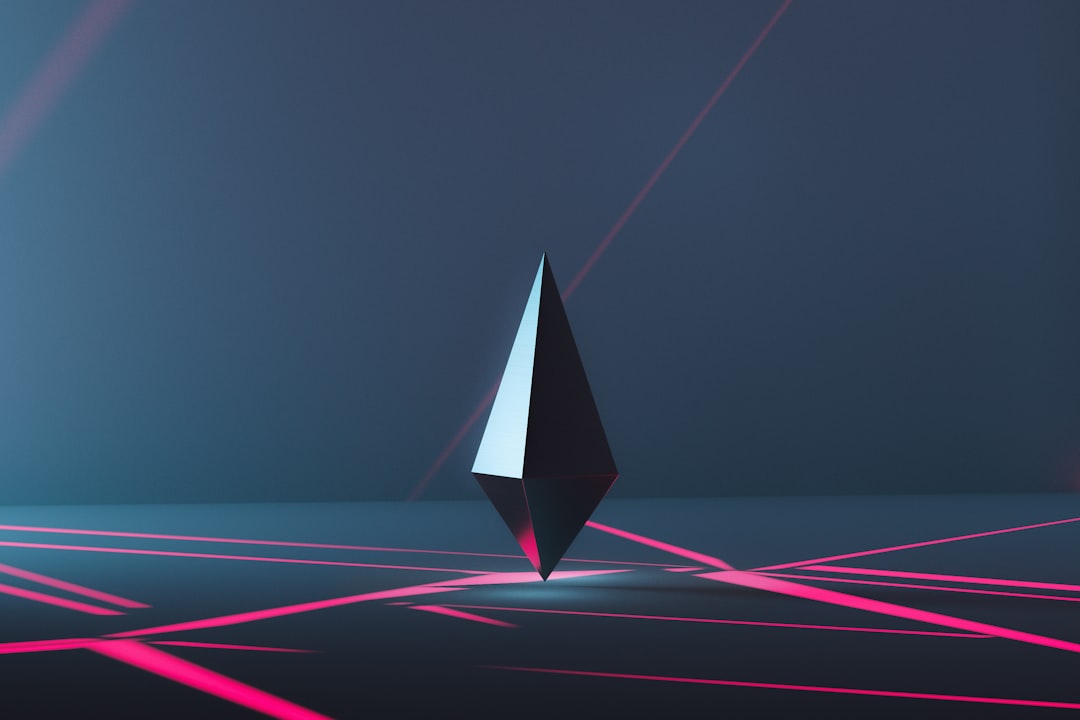Welcome to the exciting world of crypto art! As technology continues to advance, the art world is no exception. With the introduction of blockchain technology, we are witnessing a revolution in the way art is created, valued, and traded.
The intersection of blockchain and art is a fascinating topic that is gaining momentum in the art community. Blockchain technology has the potential to transform the art world by empowering artists and collectors, increasing transparency, and providing new ways to value and trade art.
Whether you are an art enthusiast, collector, or professional artist, it is crucial to understand the impact of blockchain technology on the art world. The use of blockchain technology in the art world has already led to the creation of a new art movement, known as crypto art.
In this blog post, we will explore the exciting world of crypto art and how it is changing the art world. We will discuss tokenization, decentralization, smart contracts, challenges, and limitations, as well as the future of crypto art in a digital world.
Are you ready to explore the fascinating intersection of blockchain and art? Let’s get started!
The Birth of Crypto Art: How Blockchain Technology is Changing the Art World
Blockchain technology has been making waves across an array of industries, but one of the most interesting applications of this technology can be found in the art world. By leveraging blockchain, artists and collectors alike are discovering new ways to interact with and value art in a way that was impossible just a decade ago.
The first iteration of crypto art can be traced back to 2014 with the launch of Rare Pepe Wallet. This platform allowed users to create and trade digital artwork featuring a character from the popular television show Pepe the Frog. While the platform was initially dismissed as a joke, it quickly gained traction and eventually led to the creation of a dedicated marketplace for these digital assets.
Since then, the crypto art scene has only continued to grow. Today, there are countless platforms and marketplaces dedicated to buying, selling, and trading digital art. For example, platforms like SuperRare and Nifty Gateway have gained popularity among collectors looking to purchase unique and limited-edition digital artwork. Additionally, even traditional auction houses like Christie’s have begun offering blockchain-based auctions for digital art.
One of the most exciting aspects of crypto art is the way it changes the value proposition of art. In the traditional art world, the value of a piece is largely determined by subjective factors like the artist’s reputation and the rarity of the piece. However, with blockchain, the value of a piece can be tied to a specific token, making it possible to track ownership and value in a transparent and immutable way.
This shift towards tokenization is also enabling a new level of ownership and investment in art. Rather than needing to purchase an entire piece of artwork, collectors can now purchase fractional interests in a piece. This not only lowers the barrier to entry for collectors, but it also provides a way for artists to raise funds and gain exposure for their work.
Ultimately, the rise of crypto art is a testament to the power of blockchain technology to transform industries in unexpected ways. As the technology continues to evolve, it’s exciting to think about the new possibilities that will emerge for artists and collectors alike.
For example, platforms like SuperRare and Nifty Gateway have gained popularity among collectors looking to purchase unique and limited-edition digital artwork.
Tokenization: A New Way to Value Art
In today’s art world, tokenization has become a buzzword for anyone who is interested in the intersection of blockchain and art. At its core, the concept of tokenization involves the creation of a digital asset that represents a physical work of art. By doing so, the artwork is given an inherent value that can be tracked on the blockchain.
This new way of valuing art has the potential to revolutionize the art market. Traditionally, the value of a work of art is determined by a combination of subjective factors such as the artist’s reputation, the rarity of the piece, and critical acclaim. However, with tokenization, the value of an artwork is determined by its supply and demand on the blockchain, making it more objective and transparent.
Tokenization also allows for fractional ownership, meaning that a single work of art can be divided into multiple tokens, each representing a portion of the artwork’s value. This opens up the art market to a wider audience, including smaller investors who previously may not have had the financial means to invest in art.
Furthermore, tokenization can help to protect the authenticity of works of art. By creating a unique digital token that corresponds to a specific physical artwork, the art world can combat issues such as forgery and theft.
Overall, tokenization offers a new and exciting way to value and invest in art. While there are still challenges and limitations to be addressed, the potential benefits are vast. As the art world continues to adapt to new technologies, it will be interesting to see how tokenization evolves and impacts the industry.
Tokenization also allows for fractional ownership, meaning that a single work of art can be divided into multiple tokens, each representing a portion of the artwork’s value.
Decentralization: Empowering Artists and Collectors
Blockchain technology is not only revolutionizing the way we value art, but also how we distribute it. Decentralization is one of the key features of blockchain and it has incredible potential to empower artists and collectors alike.
Traditionally, the art world is dominated by galleries and auction houses, who act as intermediaries between artists and collectors. They set the prices, take a cut of the sales, and control the entire distribution process. This can lead to a limited number of artists being able to make a living from their work, and for collectors, it can mean high prices and limited access to certain artists.
Blockchain technology is changing this by removing the need for intermediaries. Artists can now directly sell their artwork to collectors without the need for galleries or auction houses. This not only gives artists more control over their work, but it also means that they can earn more money from their sales, as they are not giving a cut to intermediaries.
Collectors also benefit from this decentralization. They now have access to a wider range of artists and artwork, as they are no longer limited to the offerings of galleries and auction houses. They can also rest assured that the artwork they are purchasing is authentic, as blockchain technology ensures the authenticity of each piece.
Furthermore, decentralization also allows for more transparency in the art world. Each transaction is recorded on the blockchain, meaning that there is a public record of all sales and ownership changes. This helps to prevent fraud and ensures that artists are properly compensated for their work.
Overall, decentralization is a game-changer for the art world. It empowers artists by giving them more control over their work and allows collectors to access a wider range of art without the interference of intermediaries. It also promotes transparency and authenticity in the art world, leading to a more fair and equitable system for all involved.
Each transaction is recorded on the blockchain, meaning that there is a public record of all sales and ownership changes.
The Role of Smart Contracts in Art Transactions
Smart contracts are a crucial component of blockchain technology and have the potential to revolutionize the way art transactions are conducted. Smart contracts are self-executing programs that automatically enforce the terms of an agreement between two parties. In the context of crypto art, smart contracts can be used to ensure that artists receive the royalties they are entitled to when their work is sold or resold.
Traditionally, artists have struggled to receive fair compensation for their work, with galleries and auction houses taking a significant percentage of the sale price. However, with the use of smart contracts, artists can now automate the process of receiving royalties. When a piece of art is sold, a portion of the sale price is automatically transferred to the artist’s digital wallet, ensuring that they receive their fair share.
Smart contracts can also be used to verify the authenticity of a piece of art. Art forgery is a significant problem in the art world, with many collectors unknowingly purchasing fake pieces. However, with the use of smart contracts, the provenance of a piece of art can be stored on the blockchain, providing an immutable record of its authenticity.
In addition to ensuring fair compensation and verifying authenticity, smart contracts can also streamline the art transaction process. With traditional art sales, there are often numerous intermediaries involved, including galleries, auction houses, and brokers. However, with the use of smart contracts, artists and collectors can conduct transactions directly, reducing the number of intermediaries and lowering transaction costs.
Of course, there are challenges and limitations to using smart contracts in art transactions. For example, the execution of a smart contract is only as good as the code it is written in, and there is always the risk of bugs or vulnerabilities. Additionally, not all artists are familiar with blockchain technology, and there may be a learning curve involved in using smart contracts.
However, despite these challenges, the potential benefits of smart contracts in art transactions are too significant to ignore. With the use of smart contracts, artists can receive fair compensation, collectors can verify the authenticity of their purchases, and transaction costs can be reduced. As the art world continues to embrace blockchain technology, it is likely that smart contracts will play an increasingly important role in the art transaction process.
However, with the use of smart contracts, artists and collectors can conduct transactions directly, reducing the number of intermediaries and lowering transaction costs.
Challenges and Limitations of Crypto Art
As with any new technology, crypto art is not without its challenges and limitations. While blockchain technology has brought about exciting changes in the art world, there are still some hurdles to overcome.
One of the biggest challenges facing crypto art is the issue of provenance. Provenance refers to the history or lineage of a piece of artwork. In traditional art sales, provenance is established through a chain of ownership, often verified by experts in the field. With crypto art, provenance is established through the blockchain, which is immutable and can be verified by anyone. However, this system is not foolproof, as there have been cases of fraud and misrepresentation in the crypto art world.
Another challenge facing the adoption of crypto art is the issue of accessibility. While blockchain technology has made it easier for artists to sell their work directly to collectors, not everyone is familiar with the technology. This can make it difficult for some artists to reach potential buyers or for buyers to navigate the buying process.
Additionally, there is a concern that the hype surrounding crypto art may lead to a speculative bubble. As with any investment, there is always a risk of a market downturn or crash, which could have serious implications for the value of crypto art.
Despite these challenges, there is no denying the potential of crypto art to revolutionize the art world. As more artists and collectors embrace the technology, we can expect to see new innovations and solutions to these challenges emerge. It will be exciting to see how the crypto art world develops in the years to come, and how it will continue to shape the future of art.
Another challenge facing the adoption of crypto art is the issue of accessibility.
Conclusion: The Future of Crypto Art in a Digital World
As we have explored in the previous sections, the intersection of blockchain and art has opened up a whole new world of opportunities for artists and collectors alike. Crypto art has already made a significant impact on the art world, and its future looks incredibly promising.
The tokenization of art pieces has provided a new way to value art, making it more accessible for people who may not have been able to afford traditional artwork. It has also given artists the ability to gain exposure and recognition for their work without having to rely on traditional institutions.
The decentralization of the art market has empowered artists and collectors by removing the middleman and allowing them to interact directly with each other. This has created a more democratic and transparent art world, where artists are more in control of their careers and collectors have more say in the art they choose to invest in.
Furthermore, the role of smart contracts in art transactions has revolutionized the way art is bought and sold. These contracts provide a secure and transparent way to conduct transactions, ensuring that both parties are satisfied with the outcome.
Of course, there are still challenges and limitations to be addressed, such as the issue of intellectual property rights and the environmental impact of blockchain technology. However, with the right solutions and advancements, these challenges can be overcome.
As we move forward, it is clear that the future of crypto art in a digital world is bright. It is an exciting time to be a part of this innovative movement, and I am eager to see what the future holds. Who knows what new opportunities and possibilities will arise as we continue to explore the possibilities of blockchain technology in the art world. The only thing that is certain is that the future of art is looking more decentralized, democratized, and accessible than ever before.





